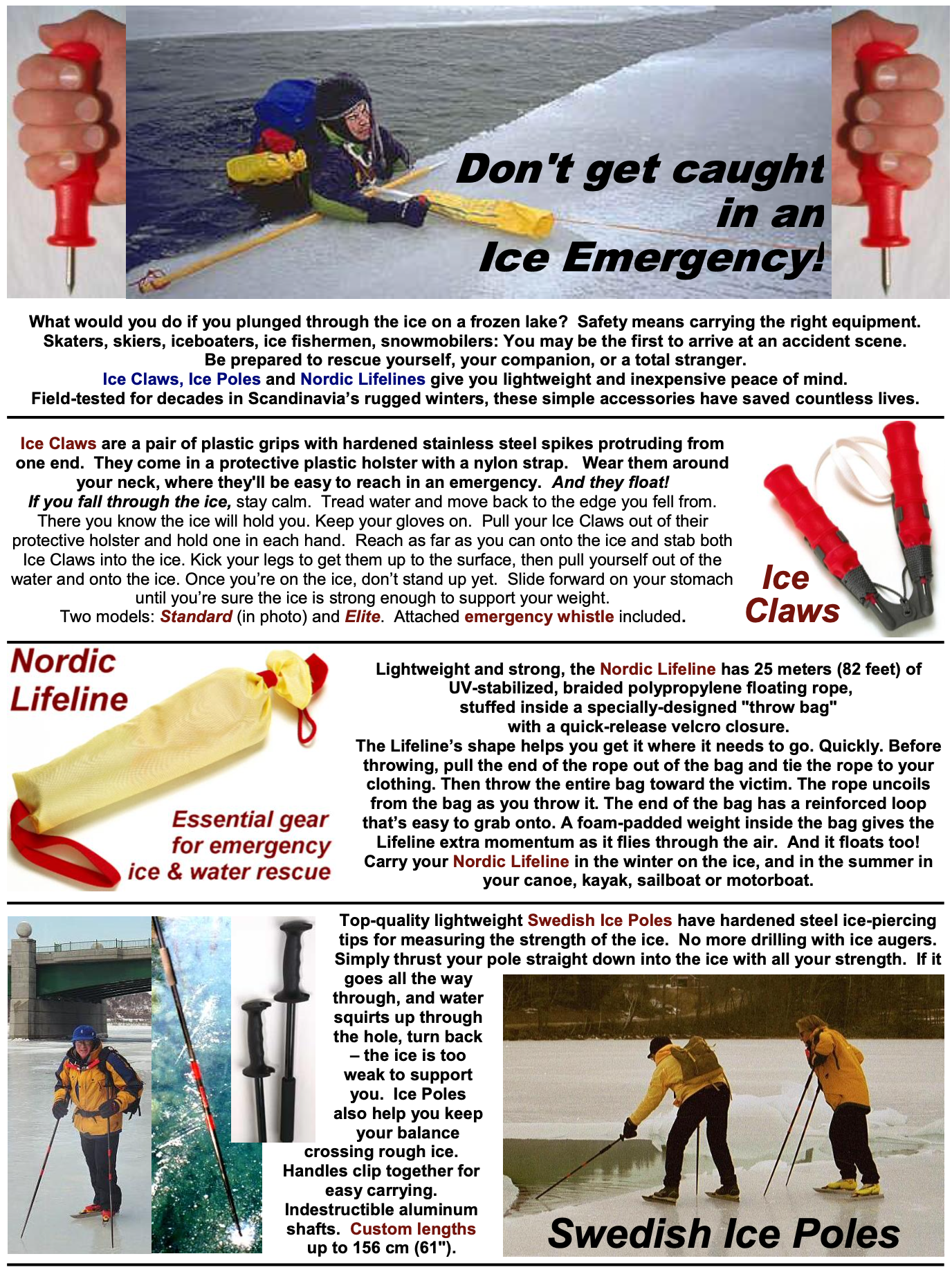Equipment List
For participants in Nordic and wild skating tours, here is a list of required and recommended equipment. The purpose of this equipment is twofold:
1. To allow you to skate efficiently across a variety of frozen terrain, testing the ice as you go, without becoming exhausted or falling behind and impacting the safety of the group.
2. To rescue yourself or another skater in the event of an accident. In real-world experience, many rescues involve a solo skater who isn’t part of your group and isn’t properly equipped to self-rescue.
Required equipment for Nordic skating tours
1. Nordic boots and blades
2. Ski helmet (a hockey or bicycle helmet is an inferior substitute, because it doesn’t provide as much coverage, and doesn’t provide warmth)
3. A pair of ice skating poles, or a wooden ice pike - for checking the strength and safety of the ice, and for propulsion across rough ice or into a headwind
4. Ice Claws - self-rescue claws or picks in a holster worn around your neck
5. Nordic Lifeline or throw bag - includes built-in flotation, a padded weight to give it momentum when thrown, and at least 80 feet of floating rope.
Recommended equipment for wild ice tours
On ‘wild ice’, where we’re picking a route across unknown and unexplored terrain, additional gear is recommended to prevent (or safely recover from) on-the-ice accidents such as tripping and falling, as well as through-the-ice accidents.
1. Flotation: Drysuit, PFD and/or waterproof backpack. If you carry a backpack, it should have a secure strap fastened around your leg or crotch to keep it low on your body so it doesn’t slide up and force your head underwater if you immerse. Your backpack should contain the following:
(a) Complete change of clothes, plus a small towel, all sealed inside a plastic trash bag or dry bag
(b) Two plastic bags sized to keep your feet dry in wet boots.
(c) Food and water
(d) Headlamp (if an accident occurs at the end of the day and you can’t get off the ice before dark)
(e) First-aid kit
(f) Microspikes (helpful for walking to shore if a skate breaks, or if someone gets hurt)
(g) Ice screw, rope, and carabiner. While pulling a victim out of the water, if digging in your skates sideways doesn’t give you enough purchase, you can anchor yourself to the ice with the ice screw.
(h) InReach GPS texting device, in case there is no cell coverage when you need to call for assistance. Or if your phone has died.
(i) Emergency bivouac (a sleeping bag made out of ‘space blanket’ material). This is very light and small, and will shield a wet or injured person from wind and evaporative cooling. It will also reflect body heat.
(j) External battery for your cell phone.
(k) Multitool and duct tape for emergency repairs.
2. Pads: Knee pads (most important), elbow pads, padded shorts, wrist guards. Ice is hard and you need protection from an impact.
3. A caliper or a J-hook to catch under the ice and give an accurate measurement of ice thickness
4. Studded boots (studs can only be installed in certain boot types with thicker soles, such as NNN-BC)
Thanks to Erzo Luttmer and Evan Perkins for a portion of this material.
